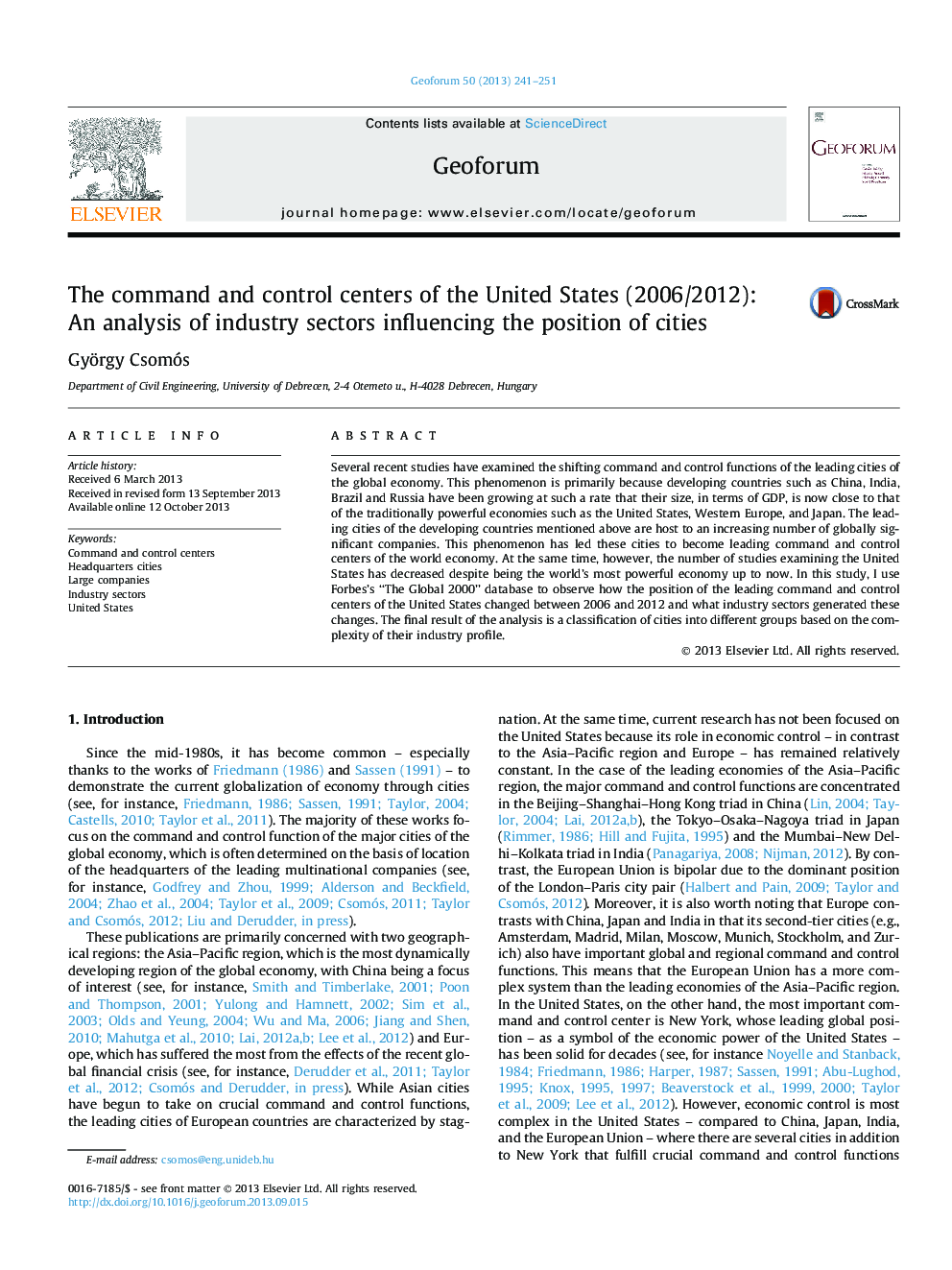| Article ID | Journal | Published Year | Pages | File Type |
|---|---|---|---|---|
| 5074137 | Geoforum | 2013 | 11 Pages |
Abstract
Several recent studies have examined the shifting command and control functions of the leading cities of the global economy. This phenomenon is primarily because developing countries such as China, India, Brazil and Russia have been growing at such a rate that their size, in terms of GDP, is now close to that of the traditionally powerful economies such as the United States, Western Europe, and Japan. The leading cities of the developing countries mentioned above are host to an increasing number of globally significant companies. This phenomenon has led these cities to become leading command and control centers of the world economy. At the same time, however, the number of studies examining the United States has decreased despite being the world's most powerful economy up to now. In this study, I use Forbes's “The Global 2000” database to observe how the position of the leading command and control centers of the United States changed between 2006 and 2012 and what industry sectors generated these changes. The final result of the analysis is a classification of cities into different groups based on the complexity of their industry profile.
Keywords
Related Topics
Social Sciences and Humanities
Economics, Econometrics and Finance
Economics and Econometrics
Authors
György Csomós,
